 All Our Tours
All Our Tours
Written by: Vicky Nguyen
Updated date:02/08/2025
Hello, I’m Vicky! As a passionate travel enthusiast and tour planner at Asia Viva Travel, I’ve gathered extensive experience traveling across Vietnam and other captivating destinations in Southeast Asia. Now, I’m thrilled to share these adventures with you through my blog. From my journeys, I’ve gained a deep understanding of the unique cultures, hidden gems, and unforgettable experiences that this region has to offer. My goal is to bring you authentic and practical insights to help you design your own remarkable adventures. Join me, and let’s discover these extraordinary places together!
Contents
| Nestled in the heart of Central Laos, Savannakhet is the country’s second-largest province – a unique crossroad where Lao, Vietnamese, and Thai cultures blend in harmony. With its rich heritage and tranquil atmosphere, this underrated gem is steadily emerging as one of the most intriguing spots for travelling in Laos. If you’re wondering “Is Savannakhet worth visiting?” – the answer lies in its peaceful charm, spiritual landmarks, and the slow rhythm of local life that invites curious souls to stay a little longer.
 Sunset serenity over Savannakhet’s old town charm 1. History of Savannakhet Old TownSavannakhet was once a key administrative hub during the French colonial period. Yet unlike cities such as Vientiane or Pakse, it did not undergo rapid modernization after Laos gained independence. This slower pace of development allowed the city to preserve its timeless charm – a quiet elegance shaped by both history and stillness. The name Savannakhet derives from the Lao phrase “Savanh Nakhone”, meaning “heavenly city” – a poetic reflection of its essence. The atmosphere in Savannakhet is very peaceful, the roads are spacious, less crowded and not noisy from car horns, instead there is the sound of wind rustling through the trees, visitors will walk on those roads, passing by colonial villas nestled gracefully next to ancient temples. Today, vestiges of its colonial past still grace the cityscape: quaint churches, weathered French quarters, and cultural landmarks like That Ing Hang stupa and the sacred Dong Natad forest. These elements blend seamlessly with local traditions, making Savannakhet a soulful stop for anyone travelling through Laos – whether seeking spiritual calm, cultural depth, or simply a pause in their journey.
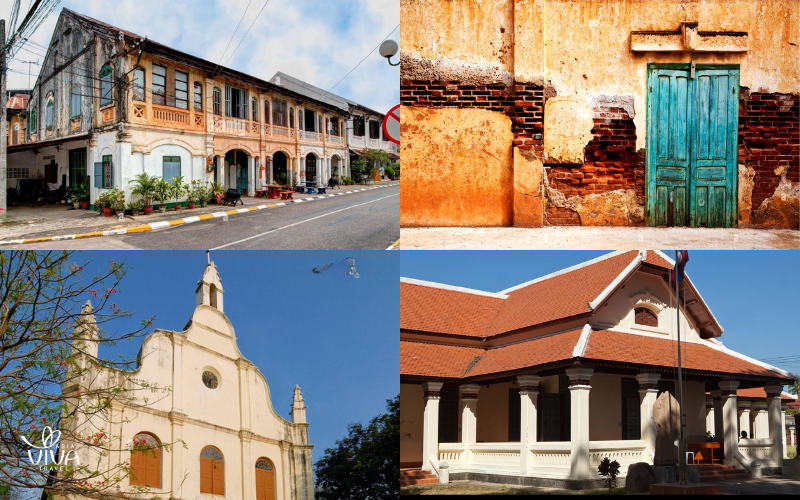 French colonial architecture meets ancient Lao spirituality
2. Is Savannakhet worth visiting?While it may not boast ancient relics as storied as those in Luang Prabang or the modern buzz of Vientiane, Savannakhet holds a quiet charm that sets it apart. The city is home to remarkable religious landmarks that reflect the architectural, spiritual, and cultural harmony of Laos. From graceful Buddhist stupas and historic Christian churches to a small but present Islamic mosque, this is a rare place where Theravāda Buddhism, Christianity, and Islam coexist – creating a tapestry of beliefs rarely seen elsewhere in the country. Beyond its spiritual depth, Savannakhet’s natural scenery is a haven for those seeking peace and connection with nature. Nestled along the majestic Mekong River, the province offers golden sunsets over calm waters, the sacred stillness of Dong Natad forest, and the gentle breeze of Nong Lom lake. It’s a setting that invites travelers to slow down, reflect, and rediscover stillness. But what truly makes Savannakhet worth visiting is its people. Warm-hearted, sincere, and endlessly welcoming, the locals offer authentic encounters that turn an ordinary trip into a meaningful memory. In every shared smile, every quiet corner, and every gentle gesture – you’ll find the soul of Savannakhet. 3. Best time to visit Savannakhet Old TownLaos has a tropical monsoon climate, with three distinct seasons: the cool dry season ( from November to February), the hot season (from March to May), and the rainy season (from June to October). For those planning a visit to Savannakhet, the best time to go is during the cool dry season. With mild temperatures and clear skies, this period allows you to fully enjoy the city’s tranquil riverbanks, sacred forests, and historic temples, without the heat or humidity. Whether you’re walking along the Mekong at sunset or exploring hidden spiritual gems, Savannakhet shines its brightest between November and February.
 Cool-season calm along the Mekong
4. How to get around in Savannakhet?Getting around Savannakhet is relatively simple, thanks to a variety of local transport options suited for short distances. Tuk-tuks and local buses are the most common modes of transport within the city. It’s easy to spot, affordable, and offers a chance to experience the daily rhythm of Lao life. For those who prefer more freedom, renting a motorbike is also a popular option to explore the place independently. However, travelers should be aware of local traffic laws and driving conditions before choosing to ride a motorbike here. If you’re not confident navigating unfamiliar roads, the most convenient choice is to join a well-organized tour package, where all transportation including comfortable limousines, private cars is seamlessly arranged by trusted operators like Asia Viva Travel.
 Tuk-tuk tales through Savannakhet’s shaded lanes
For longer journeys or off-the-beaten-path experiences, options include intercity buses and even boat rides on the Mekong River. In fact, drifting along the Mekong at sunset is an unforgettable experience, especially on warm summer evenings. If you’re interested in this scenic journey, it’s important to negotiate prices in advance, or better yet, let Asia Viva Travel handle all the arrangements for you. >>>> Laos tour in Asia Viva Travel: https://asiavivatravel.com/en/exploration-of-twin-capitals-in-5-days 5. What to do in Savannakhet?That Ing Hang StupaLocated just 15 km from Savannakhet along Highway 9, That Ing Hang Stupa has become a must-visit landmark for travelers exploring southern Laos. Not only is it a sacred site for worship and prayer, but the temple grounds also hold significant architectural and artistic value, making it a favorite stop for both cultural discovery and photography enthusiasts. From above, the temple complex forms a perfect square, enclosed by brick walls on all four sides. Inside, four covered corridors shelter rows of terracotta Buddha statues, each painted in yellow and lined up with quiet grace. At the heart of the complex rises a 10-meter-high conical stupa, believed to be the resting place of a revered monk and the very site where the Buddha once descended, according to local legends. This deep spiritual symbolism has earned That Ing Hang the title of one of the most sacred places in Laos.
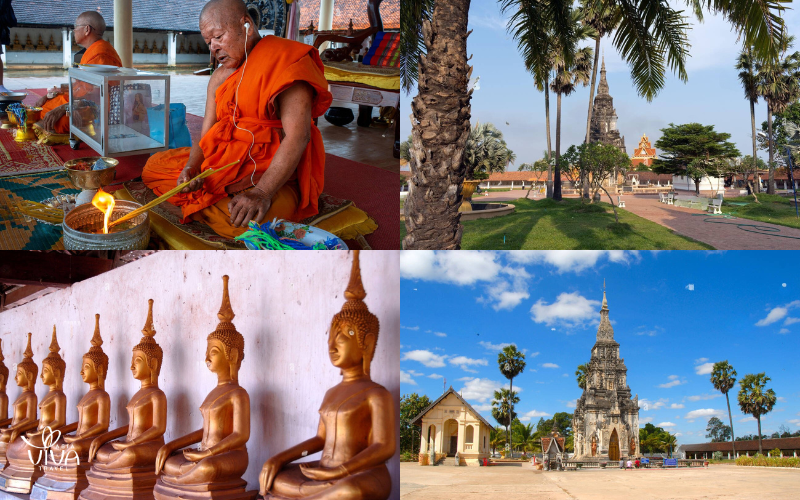 That Ing Hang Stupa – sacred silence carved in stone
Intricate wooden carvings, round sandstone figures, and delicate reliefs depicting the Buddha in meditation, celestial beings, birds, and lotus flowers adorn the corridors and ceremonial halls. In the prayer room, a small bronze Buddha statue, only 40 cm high yet surprisingly heavy, becomes a spiritual test. Legend has it that those who can lift the statue after praying will be protected throughout their journey. Importantly, That Ing Hang welcomes not only Buddhist pilgrims. Many visitors, whether Christian, Muslim, or simply curious travelers, come here to learn about the religious culture of Laos, admire the tranquil architecture, or simply seek a moment of inner peace amidst the serenity of the temple grounds. It is a place where belief, curiosity, and stillness coexist, reminding us that peace has no religion, only presence. After offering a quiet prayer or respectful observation, guests can linger beneath flowering trees, admire the traditional patterns etched into wood and stone, and feel the deep calm that seems to settle over every corner of this sacred site. Savannakhet Dinosaur MuseumThe Dinosaur Museum in Savannakhet fascinates visitors with real dinosaur fossils unearthed right in Laos. This region gained scientific attention in the 1930s, when a French geologist discovered the first fossils, some dating back hundreds of millions of years. Today, the museum showcases authentic specimens like teeth, bones, and femurs from sauropods and theropods, alongside replicas, geological maps, and research materials. With displays in Lao and French, and helpful English-speaking staff, the museum offers an engaging and accessible experience for all.
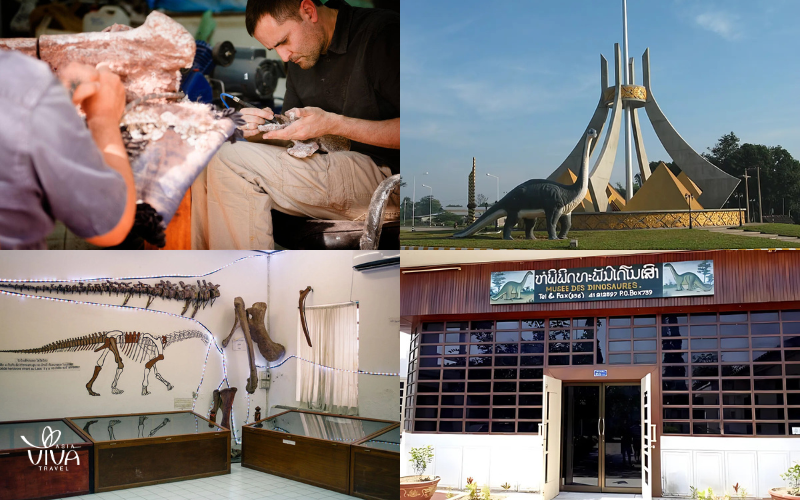 Echoes of prehistoric giants in central Laos Wat XayaphoumWat Xayaphoum, an interesting place, is located on the banks of the Mekong River, in the village of Ban Xayaphoum. Built in 1542, this temple is not only a sacred religious site but also a center for Buddhist education, attracting monks and devoted students who wish to study the Dharma. What makes the visit special is that young monks here often act as your informal guides. Many will approach visitors to practice their English skills, and in return, travellers ‘re welcome to ask questions about the temple and Lao Buddhist culture.
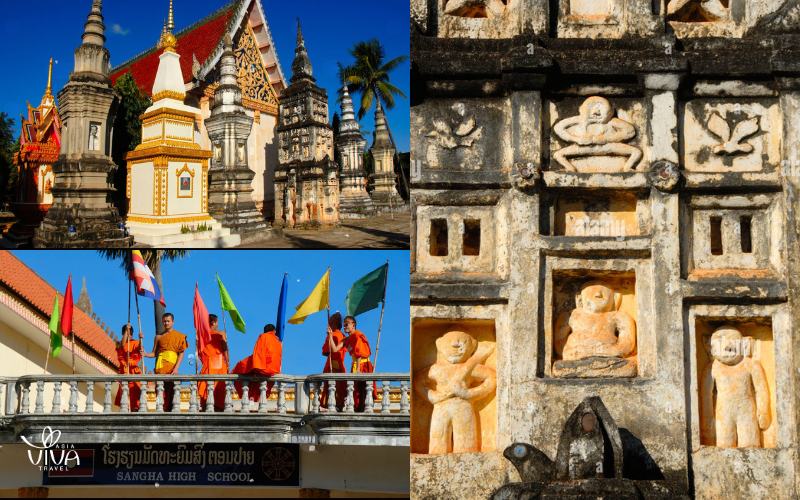 Conversations with young monks by the Mekong
Beyond its sacred halls housing large Buddha statues, Wat Xayaphoum boasts stunning traditional Lao Buddhist architecture, it’s perfect for tourists to capture memorable photographs. The temple also serves as a key venue for major religious festivals, including Pi Mai Lao (Lao New Year) in April and the Boat Racing Festival in October. Tourists who want to visit this place will pay the entrance fee of 10,000 LAK (approximately 1.20 USD). Dong Natad National Protected AreaNestled just a short trek from Savannakhet, Dong Natad Forest Reserve offers an escape into pristine wilderness. Walking along the tree-lined trails, exploring the peaceful Nong Lom Lake, and possibly spotting rare wild birds, even a snake gliding gently across the forest floor, visitors can rest assured that although it is trekking, the route is not too difficult, tourists can leisurely enjoy the scenery but are still encouraged to wear appropriate clothes and shoes in case you have to climb uphill. In the forest, two tribal villages have been inhabited for more than four centuries, visitors can observe the daily life of the people here or participate in some activities such as fishing, mushroom harvesting, etc. Traveling with eco-guides (many speak English and work with local village hosts) ensures a meaningful, respectful visit. Visitors often comment on the genuine friendliness of the villagers,this is more than just sightseeing, it’s an opportunity to immerse in Lao nature and culture at its purest.
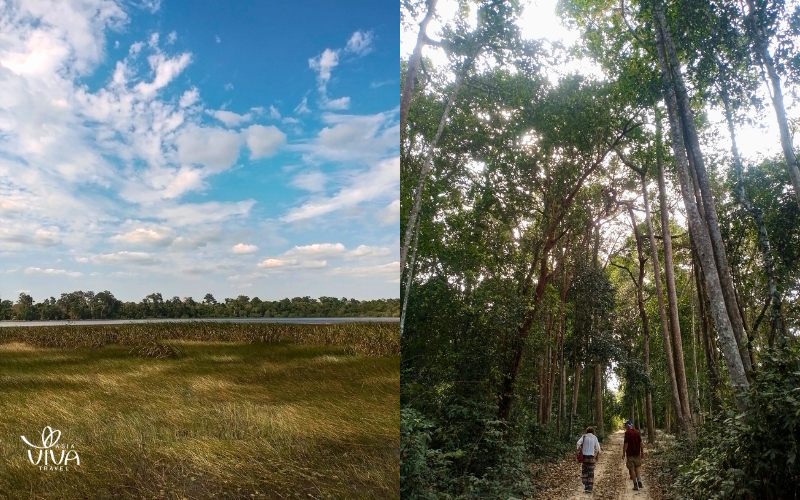 Nature’s stillness in Dong Natad Forest Reserve
Visit Night Market, SavannakhetUnlike the bustling daytime local markets scattered throughout the province, night markets in Savannakhet are more intimate and focused, often found only in the heart of the city or along the banks of the Mekong River. These night markets are not just a place to shop, they’re a confluence of cultures, a culinary journey shaped by the region’s unique geographical role as a trade hub between Laos, Thailand, and Vietnam. As the sun dips below the Mekong, the market comes alive with the sizzling sounds and tantalizing aromas of three nations’ cuisines. Many markets even provide open-air seating, inviting you to sit, eat, and absorb the night air—a perfect opportunity for a laid-back food tour experience under the stars.
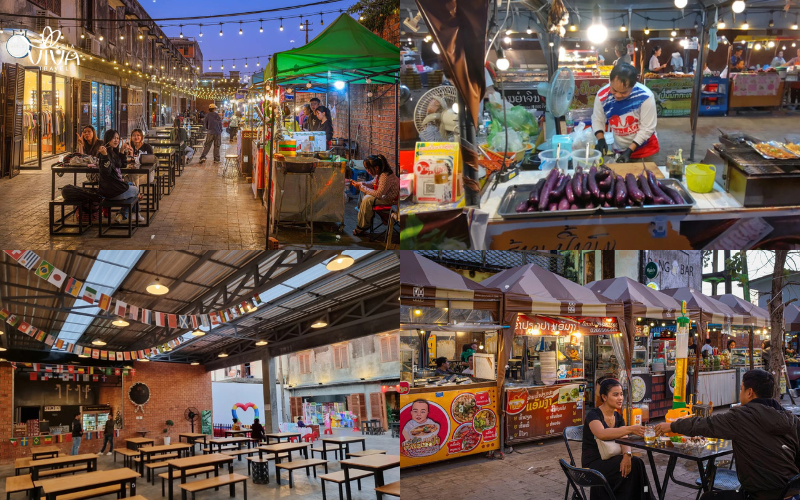 Flavors of three nations under one starry sky
What sets it apart is the authenticity: Thai street food sold by Thai locals, Vietnamese snacks prepared by Vietnamese immigrants, and Laotian specialties passed down through generations. You can stroll through rows of food stalls offering everything from grilled skewers and fresh spring rolls to spicy papaya salad and sticky rice desserts. In addition to food, you’ll find small souvenir stalls selling handmade crafts, textiles, and simple trinkets that reflect the province’s multicultural spirit. Whether you’re a curious foodie or a cultural explorer, Savannakhet’s night markets offer a vibrant yet relaxed slice of everyday life, flavored with stories from three nations and the warmth of local hospitality. Try delicious food in SavannakhetNo trip to Savannakhet is complete without savoring the local culinary gems! Lao cuisine here is simple yet rich in flavor, drawing influences from neighboring Thailand and Vietnam while preserving its own rustic soul. Larb (ລາບ) – This minced meat salad is the national dish of Laos. Made from pork, chicken, or beef mixed with lime juice, fish sauce, toasted rice powder, and fresh herbs, it’s similar to Thai larb but less spicy and more herbaceous. Tam Mak Hoong (ຕໍາໝາກຫຸ່ງ) – The Lao version of papaya salad. It’s bolder and funkier than the Thai Som Tum thanks to fermented fish sauce (padek). Crunchy, sour, spicy, salty – it’s a flavor bomb you’ll never forget! Khao Jee (ຂ້າວຈີ່) – Think Vietnamese bánh mì, but with a Lao twist. This crispy baguette is stuffed with grilled meats, pickled veggies, and sometimes even Jeow bong (chili paste). It’s perfect street food to grab on the go! Or Lam (ອໍ່ຫຼາມ) – A comforting stew from Northern Laos, made with buffalo meat or chicken, eggplants, wood ear mushrooms, and thickened with grilled sticky rice. It has a slight bitterness from sakhaan (a spicy wood root), unlike anything in Vietnamese or Thai cuisine. Khao Poon (ຂ້າວປຸ້ນ) – A noodle soup with coconut milk, lemongrass, and minced fish or chicken. It resembles Vietnamese bún dishes, but with a creamier, heartier broth. A staple at festivals and special gatherings.
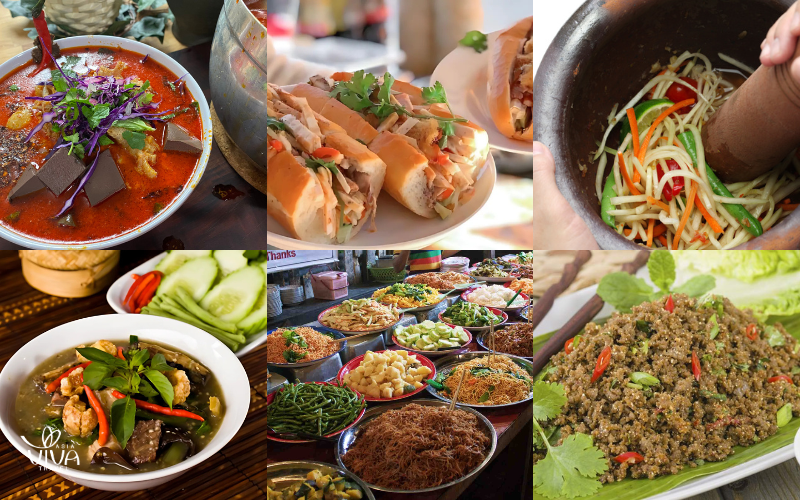 A cross-border feast, served Lao-style
6. The route connecting the Indochina countries passes through SavannakhetCrossing from Vietnam into Laos via Savannakhet: The Lao Bảo – Dansavanh RouteTravelling to Central Vietnam, going through cities such as Danang, Hue,… one of the most convenient gateways into Laos is through the Lao Bảo – Dansavanh international border. Located in Quang Tri Province ( far from Hue 67 km) on the Vietnamese side, this border crossing connects directly to Savannakhet Province in southern Laos via Route 9, a key segment of the East-West Economic Corridor (EWEC). The drive from Hue to the border takes around 3-4 hours (roughly 180 km). After clearing immigration procedures (the checkpoint operates daily from 7:00 AM to 6:00 PM), travelers continue on a scenic route through forested hills and rural Lao villages. From the border, it’s about 240 km to Savannakhet City, a journey that takes 5-6 hours by bus or private car. This overland route is ideal for those on a multi-country Indochina journey, offering a seamless way to transition from Vietnam’s imperial heartland into the tranquil rhythms of southern Laos. From Thailand into Laos via Savannakhet: Crossing the Second Friendship BridgePlanning a journey from Thailand to Laos or Vietnam with a stop in Laos? One of the most accessible and scenic routes begins in Thailand’s Mukdahan Province, where the Second Thai–Lao Friendship Bridge spans the Mekong River, connecting directly to Savannakhet in southern Laos. This international bridge is a popular crossing point for travelers coming from Bangkok or northeastern Thailand. The route flows effortlessly: This pathway is ideal for multi-country Southeast Asia tours, especially those linking Thailand – Laos – Vietnam. Whether you’re navigating cultural treasures in Champasak, wandering ancient temples, or heading toward Vietnam’s Central Highlands or Imperial Hue, this overland route offers a rich blend of convenience and authentic local encounters. From Savannakhet to CambodiaFrom Savannakhet, travelers heading south can follow the scenic route through Pakse in Champasak Province, before reaching the Dong Kralor border checkpoint, one of the main international crossings between Laos and Cambodia. This route leads directly into Trapeang Kreal on the Cambodian side, offering a convenient land connection for those journeying from central Laos into northern Cambodia. It’s a favored path for overland travelers seeking to experience the tranquil Mekong landscapes and the cultural richness spanning across southern Laos and northeastern Cambodia. In a world rushing forward, Savannakhet chooses stillness. And perhaps, that’s exactly what we need — a place that offers no distractions, only presence. So when your journey takes you south, let this town surprise you. Slowly, gently — just like Laos always does. Ready to explore Laos beyond the usual? Let Asia Viva Travel help you design your perfect route through Savannakhet and beyond. |
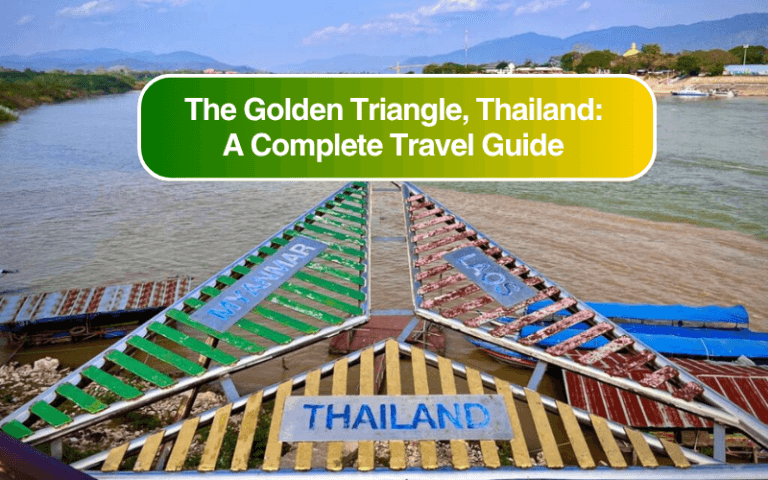
 19/11/2025
19/11/2025The Golden Triangle is one of the most legendary travel destinations in Southeast Asia, known for its history, stunning river landscapes, and multicultural influence

 08/10/2025
08/10/2025Discover Laos airports: 11 international & domestic hubs connecting travelers to Vientiane, Luang Prabang, Pakse, and nearby Southeast Asian countries.

 05/09/2025
05/09/2025Discover the Bolaven Plateau in southern Laos – explore stunning waterfalls, coffee plantations, local markets, and scenic loops with our complete travel guide
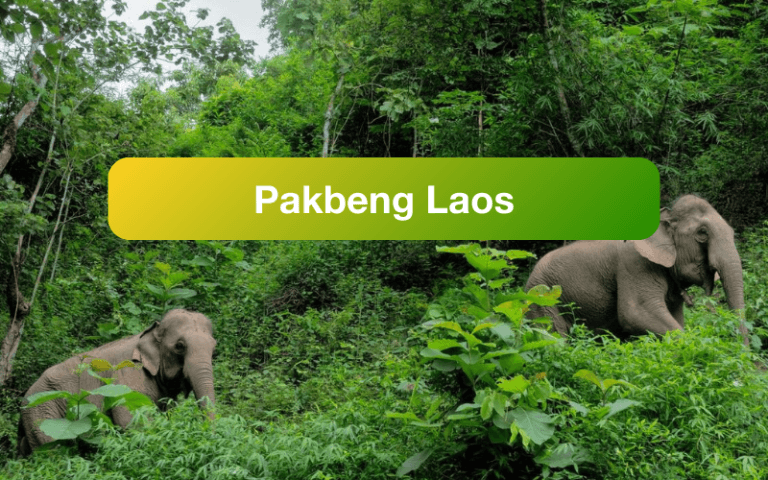
 23/08/2025
23/08/2025A true vagabond experience in the Pakbeng Laos river region, where the pace of life slows down on a slow boat trip, exploring peacefu villages and l landscapes